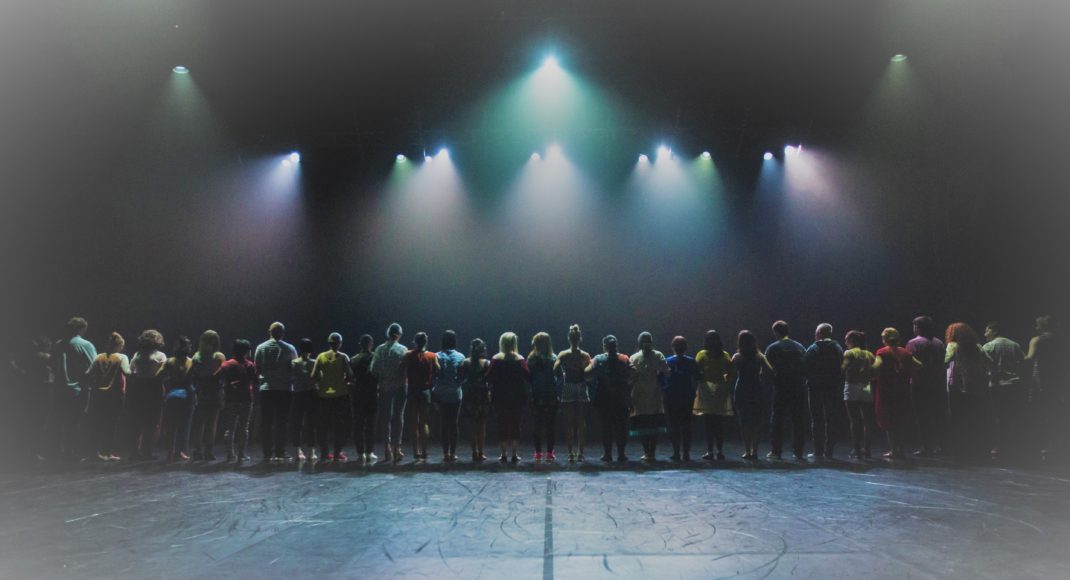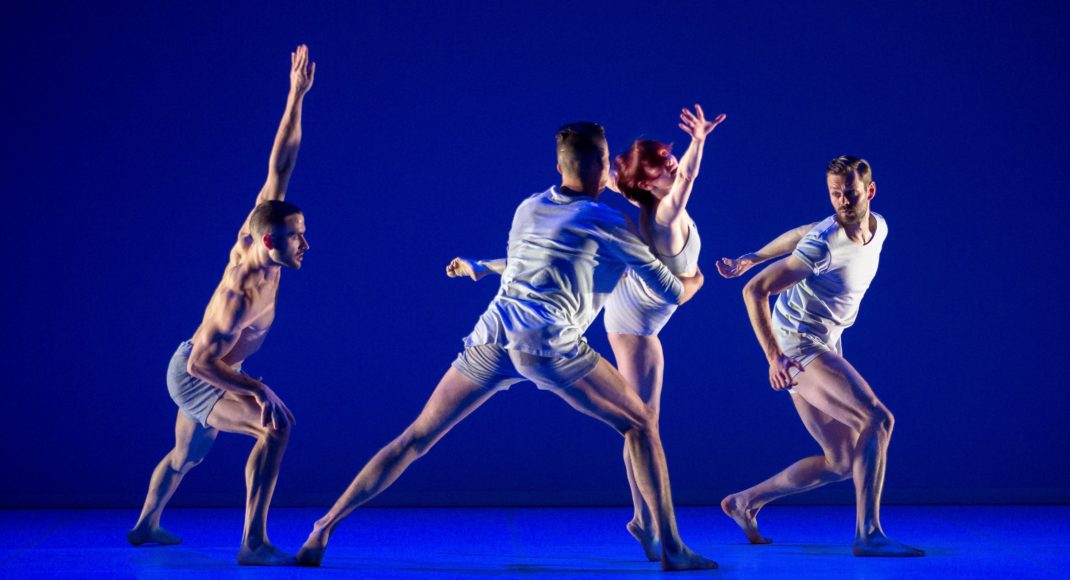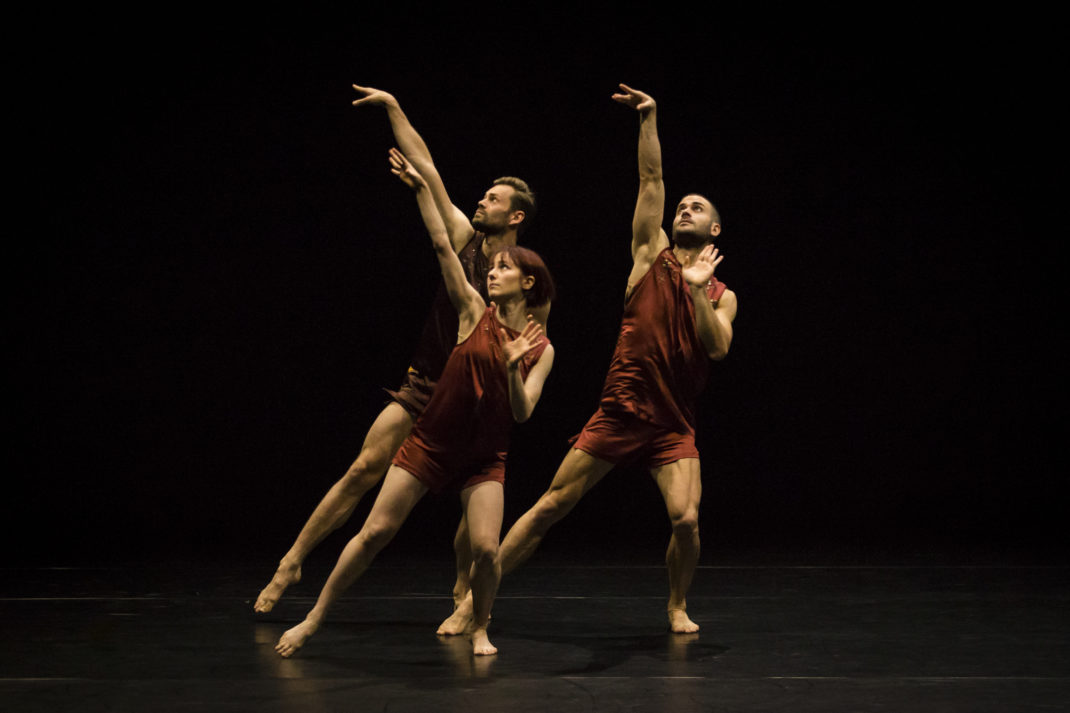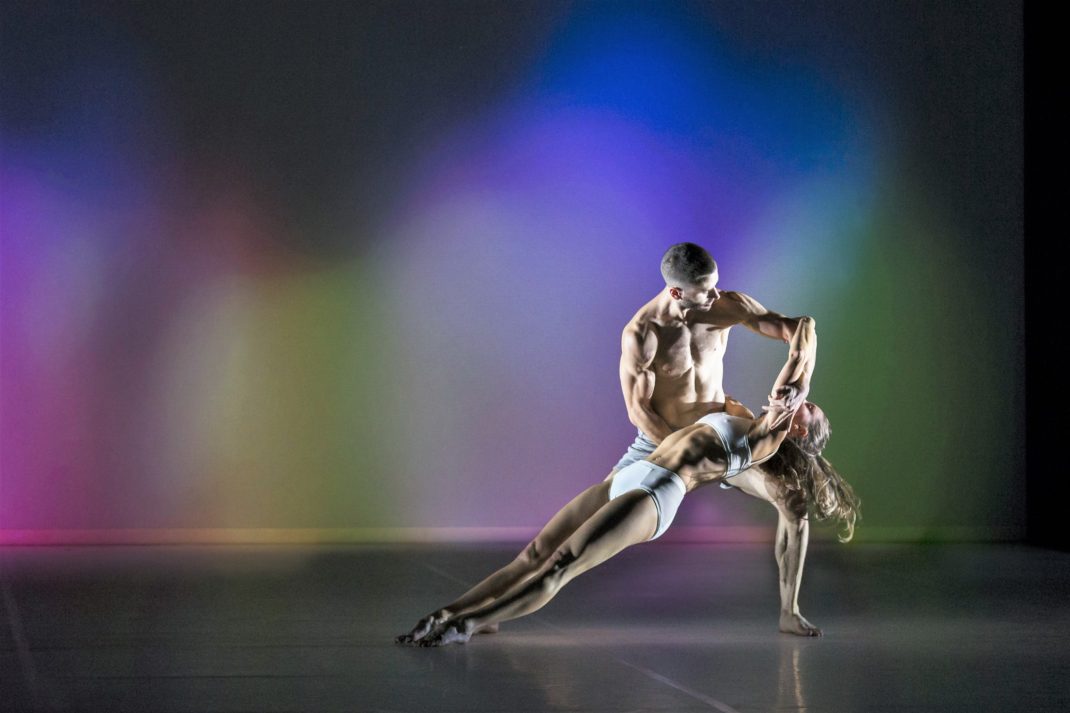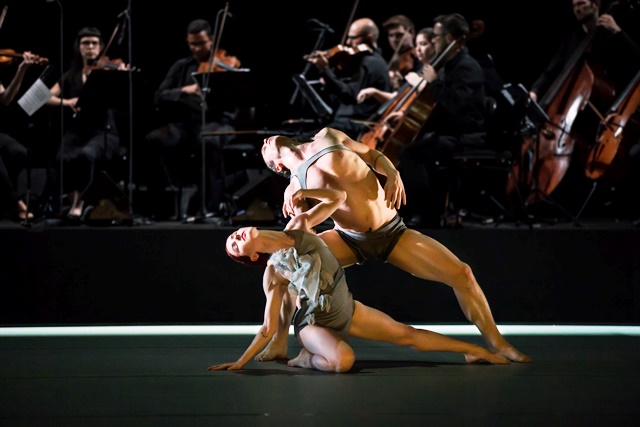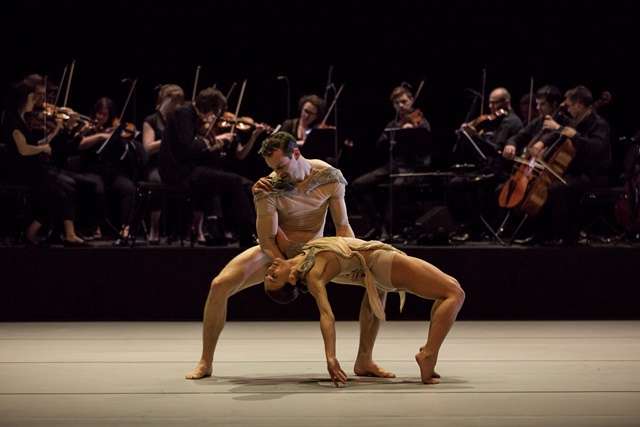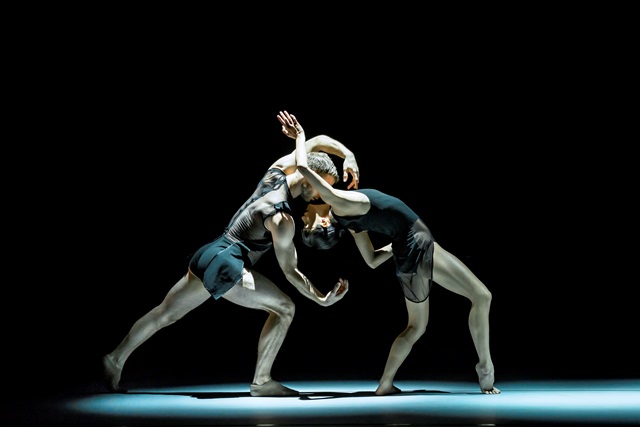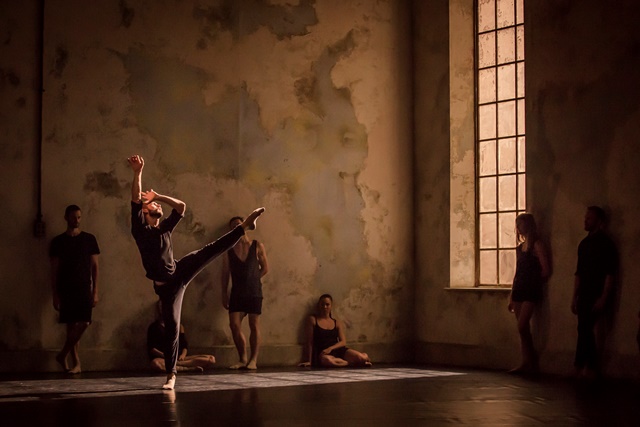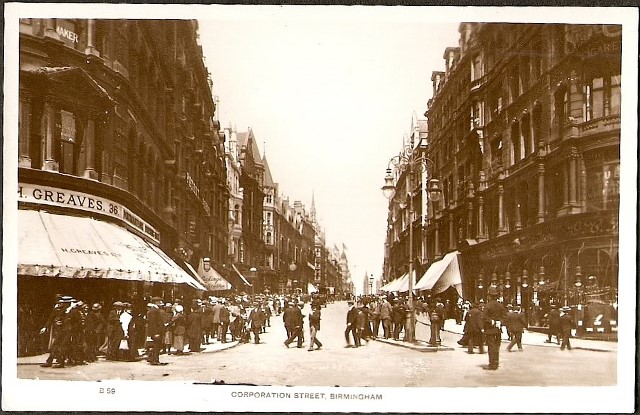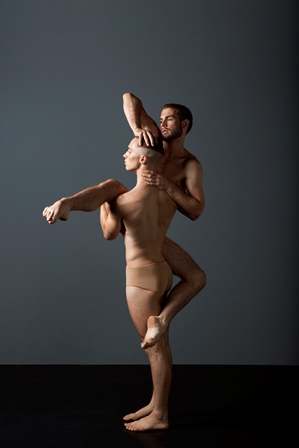9 December 2016, Carriageworks, Eveleigh (Sydney)
The most ‘left-of-centre’ work on this year’s New Breed program was the final offering, Shian Law’s Epic Theatre. His premise, which he enunciated at the end of his work, was that theatre is basically one set of people looking at another set of people. And so he played with who was audience and who was performer, beginning as we entered the performing space for the start of his work. There was, however, a kind of ‘taster’ during the interval when we watched two dancers engaging in a powerful physical encounter outside the theatre space. (Carriageworks doesn’t really have a lobby as such).
Once inside, we were confronted by a line of people, a mix of dancers and audience, with arms linked tightly. The way to our seats was effectively blocked. Gradually we were given an opportunity to move to our seats and once everyone was in, there was some crazy dancing, especially from the tall and physically expressive Sam Young-Wright who, at one stage, stripped down to his underpants. There was also a lot of walking up, down, and around the performing space by dancers and some audiences members. But in the end, as entertaining as it all was, and that entertaining aspect extended to an electronic score played live by composer Marco Cher-Gibard, the idea was more interesting than the performance.
Coming in a close second in the left-of-centre stakes was Richard Cilli’s Hinterland. It began with a section in which a group of dancers ‘commented’ on the dancing of their colleagues with noises of various kinds—grunts, whoops and a range of silly sounds. Then followed a section when the dancers collapsed in a writhing heap while the triumphant strains of Liszt’s Chapelle de Guillaume Tell filled the air. The work finished with a section in which there was an ongoing discussion of which dancer was most like which character in the movie Titanic. (Bernhard Knauer was the iceberg!)
According to Cilli, Hinterland ‘explores the tension between outward appearances and the vast inner landscape.’ A little like Epic Theatre, the idea was a rather more interesting than the outcome. Having said that, some parts Hinterland were quite funny and Daniel Roberts was particularly expert at making his silly noises sound perfectly suited to the movements of his colleagues
I really enjoyed the opening work, Jesse Scales’ What you see, even though it might be regarded as the most conventional of the evening’s offerings—if indeed anything emerging from Sydney Dance can be thought of as conventional. Made for just three dancers, Cass Mortimer Eipper, Nelson Earl and Latsiha Sparks, and performed to music by Max Richter, it consisted basically of three solos, followed by a group section in which the silent screams of each of the dancers was a gripping element. Each solo focused on a different kind of gloom or torment, but the dancing was so good that the darkness of mood did not overpower the work. The whole was carefully composed with each solo following on smoothly from the other, and with the performers often moving down the diagonal with the kind of extreme movement that characterises much of Sydney Dance Company’s work. All three dancers performed exceptionally well and their facial expressions were a powerful means of highlighting the moods of What you see.
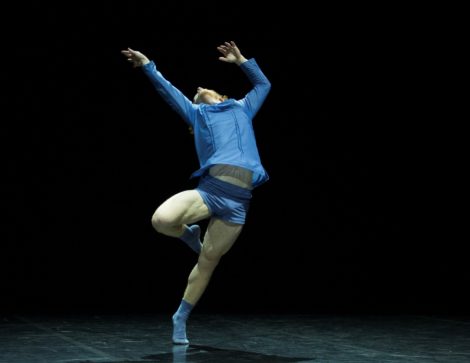
For me the work of the night, however, was Rachel Arianne Ogle’s Of Dust, which explored connections between the stars, and other cosmic forces, and man’s journey from birth to death. It was a fast moving piece danced to a commissioned score by Ned Beckley. It began with a tightly knit group of dancers, five in all (Juliette Barton, Richard Cilli, Nelson Earl, Cass Mortimer Eipper, and Charmene Yap), pulling each other and the group into a series of constantly changing shapes. There was tension there, but also a feeling of unity. What followed teetered between order and disorder, connections and disconnections with some wonderful dancing from Juliette Barton and Charmene Yap in particular. Partnering was exceptional and the work moved swiftly and lyrically from beginning to end.
Unlike the situation with What you see, perhaps it would have been difficult to make the connection between Ogle’s work and her intentions without program notes, but Of Dust was a beautiful work to watch. It is the first piece I have seen from Ogle, who is based in Western Australia. I look forward to seeing more.
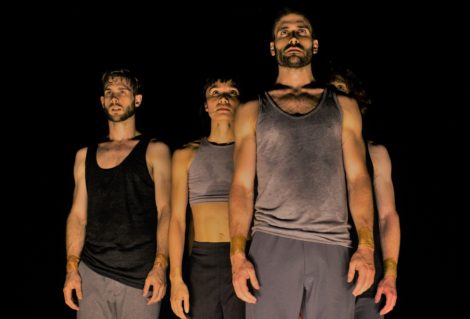
Lighting for each of the four works was by Benjamin Cisterne and was most effective in Of Dust where Cisterne was able to use downlights, circles of light, changing colours, and other devices to add to the feeling that we were looking beyond the earth.
Michelle Potter, 14 December 2016
Featured image: Scene from Epic Theatre, Sydney Dance Company. Photo: © Pedro Greig

On another note, it is frustrating that Sydney Dance Company no longer provides names of dancers in the captions attached to its media images. The dancers of Sydney Dance Company are all exceptional performers and deserve to be identified. I can guess but I’d rather be sure by having the company do the work of identification.
